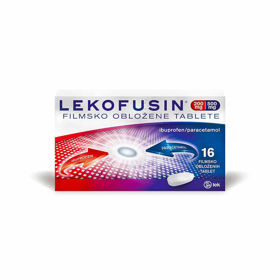Every one of us encounters pain in our lives: almost every fourth resident of Slovenia faces pain such as headache, migraine or lower back pain.
Even if pain occurs, it does not mean that we have to deal with it without help. In the article below, we will get to know the pain in more detail and the ways in which we can relieve it ourselves.
Image: An unpleasant pain in the neck.
What is pain anyway?
Pain is by definition an unpleasant sensory and emotional perception associated with actual or potential tissue damage.
It is caused by the stimulation of pain receptors, but it basically has an important task: it warns us that something is happening in our body that can harm our health.
Agents that relieve pain
We know several active substances that we use to relieve pain. Among the most common are analgesics and antipyretics (e.g. paracetamol and acetylsalicylic acid) and non-steroidal anti-inflammatory and antirheumatic drugs (e.g. ibuprofen and naproxen).
In the article we will highlight paracetamol and ibuprofen.
Paracetamol relieves pain and lowers elevated body temperature.
Ibuprofen relieves pain, lowers fever and has an anti-inflammatory effect.
What is the difference between paracetamol and ibuprofen?
Paracetamol and ibuprofen differ in their site and mode of action.
Image: unpleasant headache.
Their modes of action are reciprocal, so in combination they provide a stronger analgesic effect, they are found together in some pain relievers.
When can we relieve the pain ourselves?
A visit to the doctor is usually not necessary when the pain is mild to moderate, short-lived and we can determine its cause. Then you can try to relieve the pain yourself or contact the pharmacist at the pharmacy for advice. Examples of such pain are: short-term mild to moderate headache, pain from minor injuries, toothache until we get to the dentist, muscle pain after exercise, or lower back pain.
In such cases, you can help yourself with various methods, for example by cooling or heating the place of pain, you can also help yourself with over-the-counter medicines available at the pharmacy.
Seek medical help for the following pains:
-
severe and sudden headache that suddenly changes and/or gets worse;
-
severe pains in the abdomen, especially if the body temperature rises at the same time;
-
severe back pain after a fall, if this pain does not subside, but even worsens, and pain relievers do not help.
Picture: An unpleasant headache when he works the most.
LEKOFUSIN – Stronger than your pain
The medicine LEKOFUSIN is available without a prescription in a pharmacy. LEKOFUSIN was rated by 93.2% of subjects as "good", "very good" or "excellent" in pain relief.
It is distinguished by the combination of paracetamol and ibuprofen, which through their synergistic action relieve pain more effectively than paracetamol or ibuprofen individually.
The drug LEKOFUSIN is recommended for severe pain, because by using two active ingredients in one tablet and with a smaller dose, we achieve more effective pain relief than with ibuprofen or paracetamol individually.
The medicine LEKOFUSIN starts working after only 15 minutes, it works for more than 8 hours.
Image: Lekofusin
Literature:
Kumar, K. and Elavarasi,P.. (2016). Definition of pain and classification of pain disorders. Journal of Advanced Clinical & Research Insights. 3. 87-90.
Przybyla, et al. (2021). Paracetamol - An old drug with new mechanisms of action. Clinical and Experimental Pharmacology and Physiology. 48. 3-19.
Sarganas, G., et al. (2015). Prevalence, trends, patterns and associations of analgesic use in Germany. BMC pharmacology & toxicology, 16, 28.
Bushra, R., et al. (2010). An overview of clinical pharmacology of Ibuprofen. Oman medical journal, 25(3), 155–1661.
Summary of the main characteristics of the medicine, Lekofusin 200 mg/500 mg film-coated tablets. Available at: www.cbz.si; last access: 13/06/2022.
Kovacic. A. Recommendations for counseling in self-treatment of pain. Slovenian Pharmaceutical Society. January 2022
Chronic pain in Slovenia. SSZB - Slovenian Association for the Treatment of Pain. 2020. Available at: https://www.szzb.si/files/static/5; last access: 13/06/2022.
216682; information prepared June 2022.









 Facebook
Facebook
 Instagram
Instagram
 info@moja-lekarna.com
info@moja-lekarna.com

